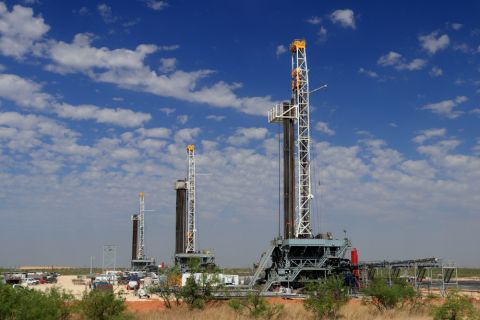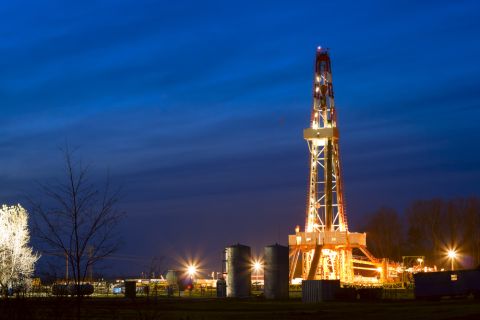As SpaceX was igniting its first successfully launched Starship (although the vehicle was lost upon reentry) at Boca Chica, Texas, a westerly neighbor along the 17-mile Brownsville ship Channel was putting the final touches on its press release.
Starship broke the sound barrier that morning. (And the live feed didn’t break X, much to the X team’s relief.)
A couple of hours later, a SpaceX Starbase neighbor, Glenfarne Energy Transition, announced it had broken through a critical stage in its Texas LNG project.
Enough banks have expressed interest in financing the 4 mtpa (192 Bcf/year) plant’s construction, thus Glenfarne can “move to the execution phase,” the company reported.
While the White House’s “pause” on approving new LNG export projects has confounded allies, putting a de facto cap on the number of plants and their already permitted expansions, it is fast-tracking uptake for those already having permits.
Boom.
Boom.
First LNG exports from the Brownsville plant are expected in 2028. The banks that are behind the next phase—project execution—are well familiar with LNG developments, “having participated in approximately $44 billion of project finance debt to the U.S. LNG sector alone over the last 24 months,” Glenfarne reported.
Some of the facility’s end-product will be 0.5 mtpa (24 Bcf/year) processed for an EQT Corp. customer.
Another neighbor of Starbase is the Rio Grande LNG plant, owned by NextDecade, and underway along the ship channel. Already under construction, it will ship 4.7 mtpa (226 Bcf/year).
Each of the projects will remove more Eagle Ford and Permian associated gas out of the Henry Hub market, providing some price relief to Haynesville and Appalachian producers at the Louisiana hub.
Also expected to take more Permian gas out of the Gulf Coast market are new Pacific Coast export plants in Mexico. One of these, Energia Costa Azul LNG in Baja, will ship an average of 0.4 Bcf/d and is already under construction. A planned expansion will send out an additional 1.6 Bcf/d.
Sempra Infrastructure is the owner/developer. The site also hosts import infrastructure, which found lack of demand after the advent of U.S. shale gas development this century.
Three additional export facilities on Mexico’s West Coast are proposed: Saguaro Energía LNG, Salina Cruz LNG and Vista Pacifico LNG, according to the U.S. Energy Information Administration (EIA).
Houston-based private equity firm Quantum Energy Partners has an interest in the Saguaro project, which is also known as Mexico Pacific LNG. The developer signed a third contract in January with Exxon Mobil. The newest one is for volumes from a third train. And Exxon Mobil took an option for an additional 48 Bcf/year in a fourth train.
“These [western Mexico] projects would use relatively low-cost natural gas imported from the United States for LNG exports to Asian markets,” the EIA reported.
Including Canada’s LNG export projects underway, projections are that North American capacity will be 24.3 Bcf/d by 2027, the EIA estimates.
Of that, 1.1 Bcf/d of the growth will be via Mexico; 2.1 Bcf/d via Canada; and 9.7 Bcf/d from the U.S., which has 10 new plants and existing-plant expansions underway currently.
The Mexican and Canadian exports via LNG would be their first.
From the U.S., exports are some 14 Bcf/d of LNG currently and, via pipe, some 7 Bcf/d to Mexico.
RELATED
Amigo LNG Exclusive Q&A: Plans to Export US Gas from Mexico
Meanwhile, some of the largest U.S. gas producers—particularly EQT Corp. and Chesapeake Energy—are curtailing output as the Henry Hub price was below $2/MMBtu in the first quarter.
CNX Resources added in mid-March that it was delaying completions, while Comstock Resources reported in February that it was paring drilling.
The gas-directed rig count was 115 in March, down from 153 a year earlier, according to J.P. Morgan Securities data that cites Bloomberg Finance and Baker Hughes. Cuts largely came from the Haynesville, falling from 67 rigs in mid-March 2023 to 37 this year.
Arun Jayaram, analyst for J.P. Morgan, reported March 15, “[We] have already begun to see a material reduction in U.S. natural gas production this month.”
U.S. production was averaging 102 Bcf/d in March, down from 104.7 Bcf/d in February. In particular, output from Louisiana fell about a half-Bcf/d to 11.7 Bcf/d and Appalachian output fell 1.7 Bcf/d from 33.8 Bcf/d.
“We believe the impact of the 2024 production curtailments and activity reductions should help improve the outlook for 2025 natural gas balances,” Jayaram reported.
Recommended Reading
CNOOC Makes 100 MMton Oilfield Discovery in Bohai Sea
2024-03-18 - CNOOC said the Qinhuangdao 27-3 oilfield has been tested to produce approximately 742 bbl/d of oil from a single well.
TPH: Lower 48 to Shed Rigs Through 3Q Before Gas Plays Rebound
2024-03-13 - TPH&Co. analysis shows the Permian Basin will lose rigs near term, but as activity in gassy plays ticks up later this year, the Permian may be headed towards muted activity into 2025.
CNOOC Finds Light Crude at Kaiping South Field
2024-03-07 - The deepwater Kaiping South Field in the South China Sea holds at least 100 MMtons of oil equivalent.
Evolution Petroleum Sees Progress on SCOOP/STACK, Chaveroo Operations
2024-03-11 - Evolution expects to participate in future development blocks, holding in aggregate over 70 additional horizontal well locations.
US Drillers Cut Oil, Gas Rigs for Second Time in Three Weeks
2024-02-16 - Baker Hughes said U.S. oil rigs fell two to 497 this week, while gas rigs were unchanged at 121.





